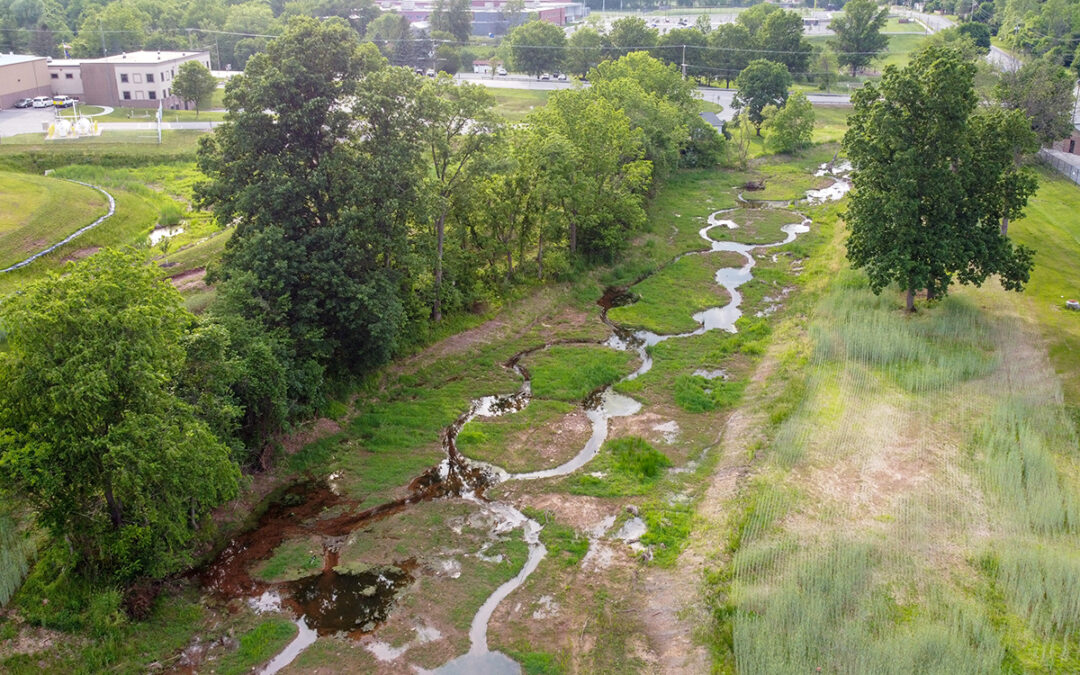The Fox Run Floodplain Restoration was a comprehensive floodplain restoration project on two unnamed tributaries to Fox Run in Dover Township, Pennsylvania. The first of several phases of a plan to transform a dilapidated golf course into a township park, the aim was to restore approximately 3,440 lineal feet of stream channel by removing legacy sediments and placing woody debris as grade control and fish habitat. The completed project would also improve water quality by removing nitrogen, phosphorus, and sediment and provide stormwater management facilities for proposed park improvements.
For this design-build project, Flyway Excavating worked as a subcontractor to LandStudies, who acted as the engineer and general contractor. The project was awarded to our company in February 2020, with construction to begin in early April for a completion date of September 18. Of course, the coronavirus pandemic and ensuing state shutdown presented a hurdle to those plans.
The project needed to be finished by mid‐September to ensure the seeding and stabilization of the floodplain could be completed in time for vegetation to become established before the winter months. We worked with LandStudies and Dover Township to secure a waiver and, with the proper safety precautions in place, began construction on the project near the end of April, several weeks behind schedule.
There were two main tasks for this project: (1) relocation of an existing 43,000-cubic-yard fill pile the owner had stockpiled for use on this project and (2) excavation of the 27,000-cubic-yard floodplain. All the material needed to be placed on an adjacent sloped field area to provide a more level surface for the construction of a park. The fill pile consisted mostly of structural fill, while the floodplain material varied greatly but could generally be considered topsoil.
We relocated the fill pile first, to provide a good base for the placement of the floodplain material and subsequently the future park. This allowed us to grade the fill evenly over the entire field area and have a solid base to run our equipment on. It also spread out the floodplain material to dry and provided a solid foundation for the park.
In addition to these tasks, Flyway also assisted with the tributary restoration by installing woody debris and buried log structures, log sill grade control structures, a concrete slat stream crossing, rip-rap grade control armoring, and rip-rap bank armoring. We worked with trusted subcontractors on E&S controls and to install concrete abutments for a future pedestrian bridge.
Despite the obstacle of the pandemic, Flyway completed work on time and on budget — without sacrificing the integrity of the project or future development of the site.
